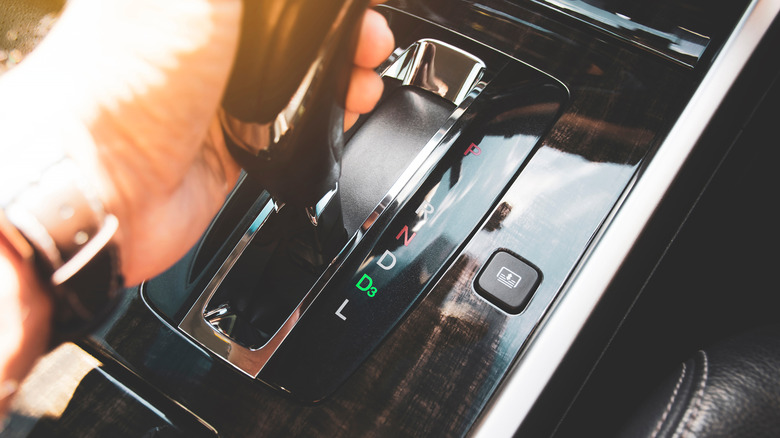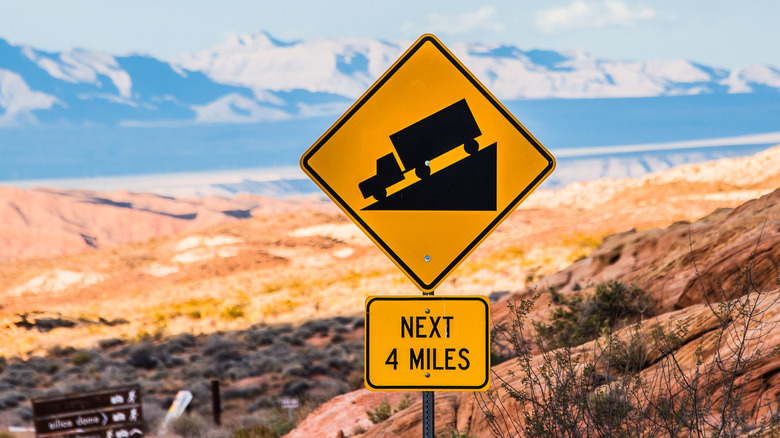What Is Overdrive In An Automatic Car, And How Does It Work?
Technology in vehicles continues to advance, and sometimes, there are so many features that it's hard to know what they all do. Even base models will come with backup cameras, Bluetooth, remote start, and heated seats — to name a few. In more luxurious models, you may find lane assist, forward collision warning, blind spot detection, and more. Then there are standard features — that have been around for years — that we don't think about, such as traction control, automatic headlights, and anti-brake locks. But what about overdrive?
Overdrive is one that, unless you know what it does and how to use it, is usually ignored. In some cases, you may have never even noticed the button because it's not something that is overly highlighted when learning to drive. However, if you have an automatic vehicle, there may be times when you should use overdrive. With that said, let's take a look at what exactly overdrive is, how it works, and when you should use it.
What it is and how it works
Nowadays, most vehicles have an automatic transmission that consists of five or more gears. However, for a long time, vehicles only had three or four gears, which required them to run at high RPMs on the highway. This caused poor fuel efficiency, so automotive manufacturers introduced overdrive. Overdrive is similar to shifting to a higher gear in a manual transmission or while in sports mode — lowering the operating RPMs.
Overdrive is automatically on when you start your vehicle. However, you can turn it off by either pressing the overdrive (O/D) button or by positioning the gear shifter. So, when would you want to turn overdrive off? There are only certain circumstances when you should turn overdrive off — either when going up a steep hill or down one.
It's especially effective when going down a steep hill. Since turning overdrive off allows you to shift to a lower gear, it increases the RPMs, allowing the engine to slow down on its own without relying on the brakes, giving the driver more control. In particular, hard braking can be dangerous on icy roads or when towing a heavy trailer. Instead, turning the overdrive off, shifting to a lower gear, and light braking is a safer way to slow down.

